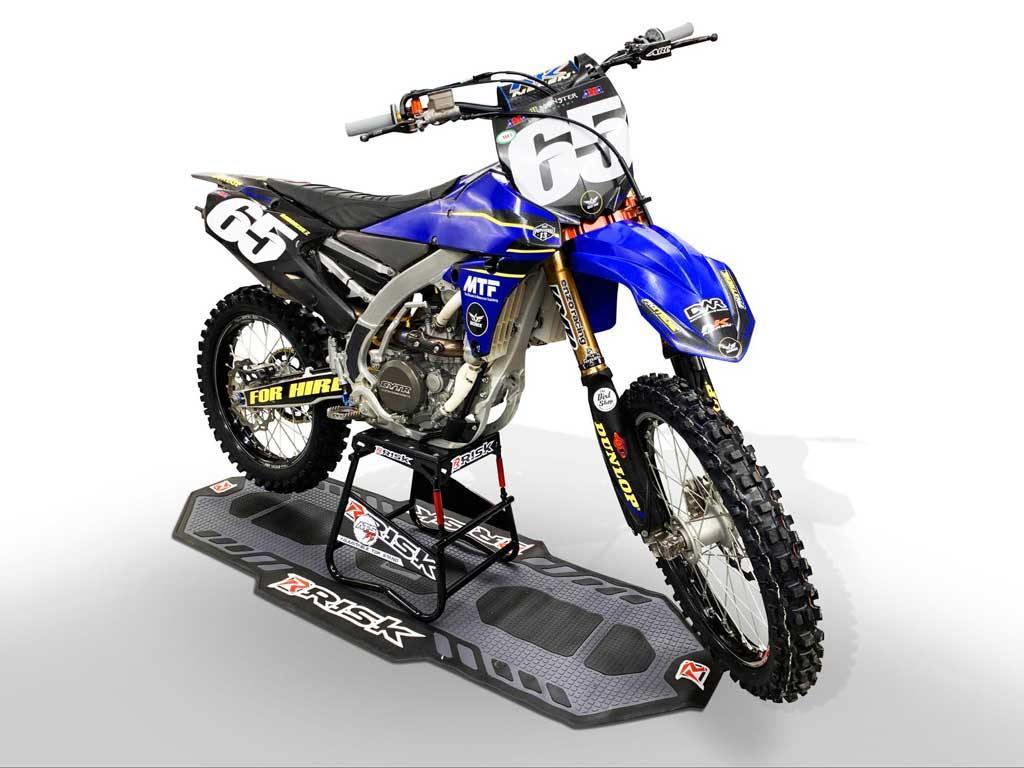Your Cart is Empty
MOTO Products
shop your way
Choose a shopping experience
Same great Risk Racing products, 3 completly different ways to shop them.
Choose a shopping experience
Same great Risk Racing products, 3 completly different ways to shop them.

Lifestyle Shopping

eComm Shopping

Catalog Shopping
MOTO TYRES
MOTO Gear & Apparel
How Are Motocross Numbers Assigned?
October 15, 2020 6 min read

It’s not like the old days where top pro-riders could keep their old-school three-digit number. Nowadays top riders can only earn low-digit numbers and lose them depending on their yearly finishes.
The AMA determines numbers based on winning order, number availability, and if the rider stays racing in the same class. The top 100 riders earn two-digit numbers and Top 10 racers pick a Permanent Career two-digit number. The Champion in each respective class runs the #1 plate the following year.
In 2000, both Motocross and Supercross implemented a numbering system that changed how numbers get assigned. This numbering system varies on a few different conditions so it can be very confusing. We’ll help guide you and make it easier to understand.
How do motocross riders get their numbers?
Placing in the Top 100 for combined points in MX and SX, the AMA determines an Assigned Professional Number for the next season. National champions have the ability to choose a single-digit number if they choose to do so. If you are not in the top 100, you are required to choose a triple-digit number, 101-999.
Factors that affect Assigning a Motocross or Supercross Number
A racer’s number can fluctuate from season to season. The American Motorcyclist Association releases Top Motocross/Supercross numbers every fall and it’s based on a few conditions:
- Classes- At the end of the year the points are tallied up from the 250/450 Motocross and the 250/450 Supercross classes and combine to create a top rider list. A single rider is allowed/encouraged to race across multiple classes throughout the year. An example of this would be if a 250 West Coast supercross racer were to race in the 450 class on the East Coast.
- Points - Another factor is overall points as this determines ranking position. After a permanent number is assigned, a pro rider has to earn at least 25 Championship points per season in order to maintain their current position. Exceptions are considered if the rider has sustained injuries or has unforeseen circumstances.
- 1st Place- If a rider wins the championship in their respective class, they have earned the rights to the coveted #1 plate for that class in next year’s season. If they change classes, they are not permitted to run the #1 plate. Unless they back up their championship in the next season, the season after they won the championship will be the only time they are allowed to run a #1 plate.
- Placing Top 10- Making it into the top 10 in the overall point standings for both classes for the year allows a rider to choose a permanent number. They are allowed to choose any number between 11-99 that is currently open. If there are multiple options it’s up to the rider’s personal preference.
- Placing Top 100- After breaking into the top 100, pro riders get assigned a 2 digit number based on their points standings and the lowest available number.
- Tie-breakers- Ties are broken by looking at factors like who’s racing in more classes, how many championships each won, and who finished the best overall.

What specifically is a Motocross or Supercross number?
It’s a one of a kind number determined yearly that is ran on their number plates and on the back of their jersey so that the rider can be recognized while racing. This makes it easier to identify them since riders are hidden when required to wear helmets on the race track. This helps fans keep track of everyone’s position during racing.
A rider can have sentimental meaning behind their number signifying something important in their life like an event, special date, or even a special bond they had with another person. Plain and simply: Numbers run in the family and can have a history of inheritance.
“No-No” Numbers - Nothing screams newbie on the track like being "clever" picking obvious numbers like:13, 69, 187, 666, 420, or 911.The number 13 can be bypassed due to superstitious reasons.
Depending on the Race Organizers a letter may be assigned after their special number to signify the age group of the rider so that it’s factored into the consideration of the rider.
Examples:
Letter C for riders in the 40 age group
Letter A for youngsters
Letters W and X can represent gender signifying that they are female.
Letters M or Y can symbolize male or boy.
Another reason to add a letter is for riders who really don’t want to give up their number and someone else has it. Simply adding on another character can be an easy way to resolve this.
One of the biggest reasons to add a letter after the number is to indicate which category/classification a rider is in like: Amateur: a, Senior: s, Junior: j, Intermediate: i or Professional: p
Why Did They Change How You Pick Your Motocross Numbers?
- Riders can earn or lose their numbers based on performance.
- Riders who stop racing can not "hold" their number and lose their ranking position.
- Racers can build a reputation making their way to the top ranking numbers and eventually earn a Permanent Career Number. They can use it like a trademark on merchandise and hold that position for years to come.
In the year 2000, the new Motocross numbering system was put into place for both Motocross and Supercross. This system created three main categories of riders: the top 10 pro riders, the 11-100 group, and the rest of the pack.
In 2005, they eliminated pro-riders from keeping a 3-digit moto number so everyone would stay within their official ranking number system.
This bummed out a lot of old school racers and fans because of the nostalgia and what their 3 digit number meant to them. Riders that were competing before this change in 2005 were grandfathered in and allowed to keep their three-digit number as their Career Number.
Mike Alessi was the last rider grandfathered into this with the #800, and since he has now stepped back from racing professionally on a national level, he has lost that number. If he were to come back and score enough points to earn a two-digit number, he would be required to run it.
Riders will hide holographic numbers over their current number or add on their old previous number for nostalgia purposes, especially to the rider and their fans, recognizing the rider by a previous number they were used to.
When a rider chooses their 3-digit number and starts their motocross career they are training and getting better all the time which builds a reputation and brand around their number. But, when they make it big time, they have to put that old number to rest and use an officially assigned one.
In 2012, they changed the 250 Regional SX points to be added because these riders didn’t feel like it was very fair, but allowing the points to count made it a little more confusing due to the fact that these racers were competing regionally and not nationally. Meaning, there is less competition for the 250SX East and 250SX West riders compared to the 450SX riders who have to compete against everyone.

AMA Membership Cost
AMA Membership Card. Visitwww.americanmotorcyclist.com/membership/join for information to become an AMA Member.
|
AMA Membership Options |
Membership Dues/Price |
|
1 Year Membership |
$49 |
|
3 Year Membership |
$147 |
|
Associate Membership |
$25 |
|
Family Membership |
$98 |
|
Lifetime Membership |
$1,500 |

Motocross Number Plate Color Meaning
In the 450 class, white backgrounds with black numbers are required for racing. In the 250 class, black backgrounds with white numbers are required.
Women ride with ‘process blue’ plates featuring white letters when racing the classes designated solely for women. If they are racing in the 450 or 250 class with the boys, they are required to run their designated class’s number plate. The points holder for a given championship is required to run a red background number plate. This could change between riders week to week, depending on who is the current points leader.
These numbers need to be seen easily making sure they are at least 5 inches high in standard block lettering. On your jersey, the numbers need to be made from contrasting colors.

What Motocross Number Should I be?
Sometimes you are only required to register a number through the AMA if you are racing in an official National AMA race. Some Districts do require it and so you’ll wanna pick a number or have them pick one for you. They recommend using the last three digits of the AMA membership number to make it easy. However, that is not a requirement. Choose a 3-digit number that means something to you personally in some way.
Some local MX tracks don’t require registration, if that’s the case, go ahead and pick any number, order it, or DIY it with some tape. Know you only have to change it at the track if someone else shows up in the same class with the same number. Bring your electrical tape and change it accordingly.
Leave a comment
Comments will be approved before showing up.
Subscribe
Sign up to get the latest on sales, new releases and more …

Limited Time 10% Off
Save on your 1st order and get email offers when you join.
Eligible for first-time website purchases only. Emails may take a few minutes to process and could get flagged by email providers as junk so be sure to wait a little bit and check your junk and/or spam folders.

 UK/EU▾
UK/EU▾




























